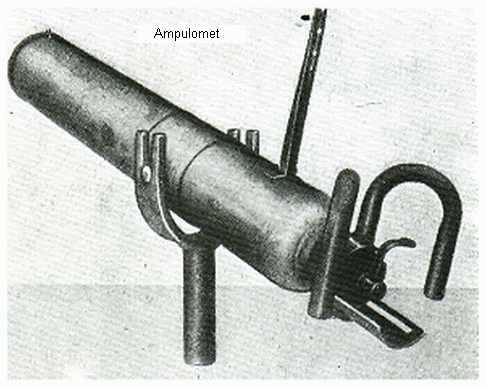Well, in that case it seems to me that certain less-known wartime developments of the Soviet Main Artillery Directorate are deserving some additional popularization amongst distinguished members of our forum. 
During the war GAU independently initiated and produced some highly intriguing, although fairly less-known weaponry. In 1944, for example, engineering team of the GAU, led by Chief Constructor G. P. Lominski (Г.П. Ломинский) actually constructed the reloadable light anti-tank grenade launcher LPG 44, based upon a simple steel tube with 30 mm diameter and 1 m length, weighing 2 kg, and being equipped with the thermo-resistant wooden veneer, as well as an independently designed over-caliber (70 mm) cumulative grenade PG 70, intended for launch by a gunpowder booster charge, and capable to penetrate up to 150 mm of armor.

Projectile PG 70
After the completion of firing trials in 1945 the launcher was redesigned and renamed as RPG-1 (Ручной противотанковый гранатомет - Hand-held anti-tank grenade-launcher), but it never was adopted for regular service, due to insufficient penetrability and inadequate longitudinal stability of the projectile.

RPG - 1
Although unused during the war, this weapon paved the way for the superior variant named RPG-2, which was officially adopted and pressed into service in 1949.
Another, even more astounding “universal” (anti-tank and anti-personnel) weapon was the Ampulomet, designed by I. Kartukov (also know as “Molotov Projector”) –

Ampulomet
This highly unusual mortar-type weapon of 127 mm caliber, barrel length of 845 mm, and weight of 26 kg, was capable to throw 8 specially designed incendiary projectiles (ampoules!) in a minute up to 400 meters!

Ampulomet in action, Stalingrad, 1942
Ampoules were filled with the self-igniting KS incendiary mixture (white phosphorus mixed with sulfur, and capable to achieve temperatures above 1000 degrees of centigrade), and launched by a standard 12-gauge shotshells filled with ordinary gunpowder.

Combat ampoule filled with the KS mixture
Nevertheless, these weapons were abandoned in 1942 due to low range and inaccuracy.
Well, that’s all for today. In the meantime, honorable ladies and gentlemen, as always – all the best! 







